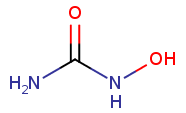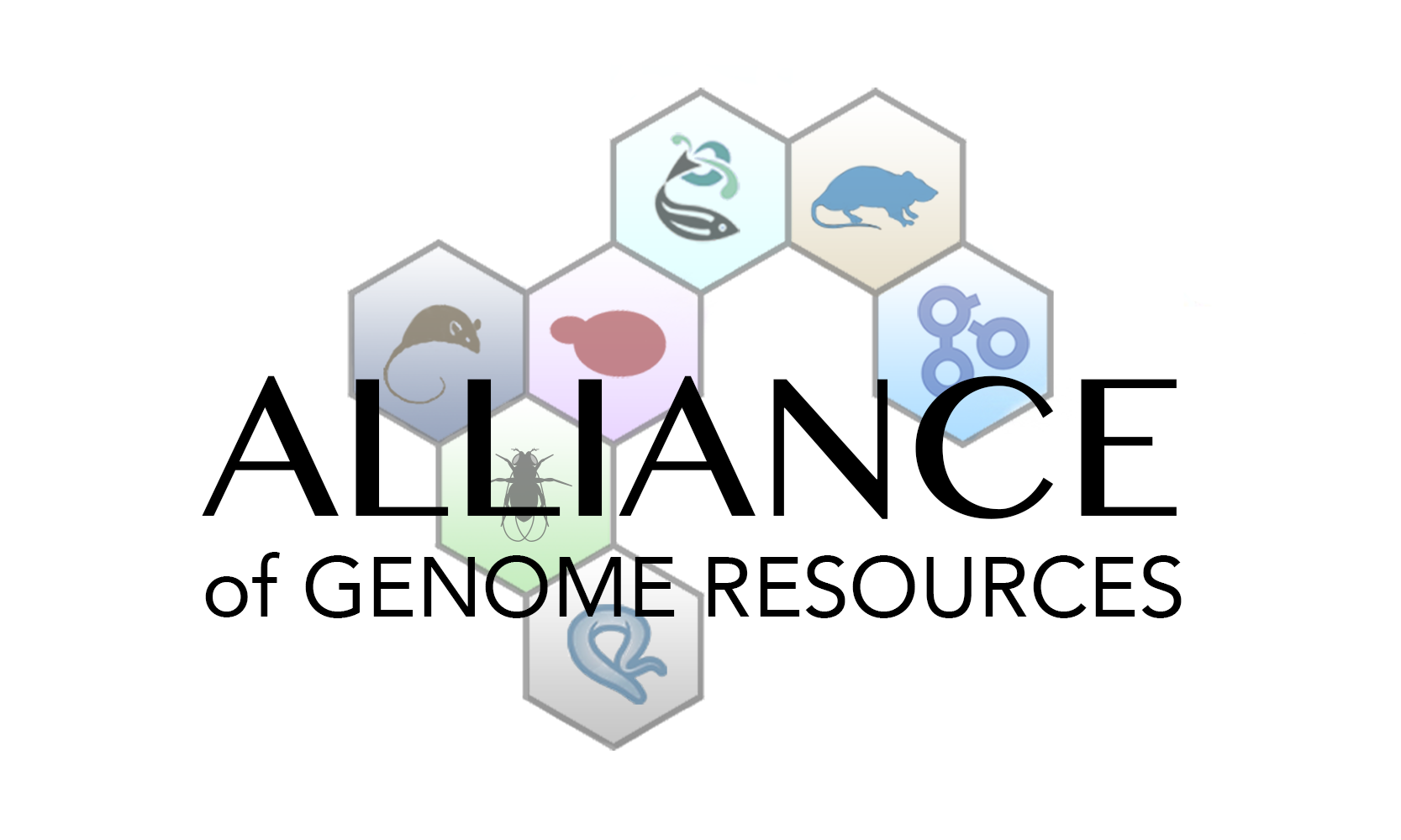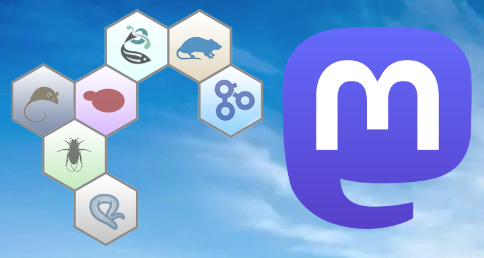New & Noteworthy
SGD Newsletter, December 2023
December 13, 2023
About this newsletter:
This is the December 2023 issue of the SGD newsletter. The goal of this newsletter is to inform our users about new features in SGD and to foster communication within the yeast community. You can view this newsletter, as well as previous newsletters, on the SGD Community Wiki.
Contents
- 1 Reference Genome Annotation Update R64.4
- 2 Full-text search tool Textpresso updated
- 3 Biochemical Pathways now in SGD Search
- 4 microPublications – latest yeast papers
- 5 Updates to SGD’s YeastMine data warehouse
- 6 Chemical structures now on Chemical pages in SGD
- 7 Alliance of Genome Resources – Release 6.0
- 8 SGD’s Social Media Footprint is Expanding
- 9 Upcoming Conferences and Courses
- 10 Happy Holidays from SGD!
Reference Genome Annotation Update R64.4
The S. cerevisiae strain S288C reference genome annotation was updated. The new genome annotation is release R64.4.1, dated 2023-08-23. Note that the underlying genome sequence itself was not altered in any way.
This annotation update included:
new uORFs for 3 ORFs:
8 new ncRNAs:
- SUT035/YNCC0015W
- SUT053/YNCD0033W
- SUT468/YNCD0034C
- SUT532/YNCG0047C
- SUT125/YNCG0048W
- SUT126/YNCG0049W
- SUT390/YNCP0025W
- SUT418/YNCP0026W
3 ORFs demoted from ‘Uncharacterized’ to ‘Dubious’ based on request from NCBI because they overlap tRNAs:
Various sequence and annotation files are available on SGD’s Downloads site. You can find more update details on the Details of 2023 Reference Genome Annotation Update R64.4 SGD Wiki page.
Full-text search tool Textpresso updated

SGD’s instance of Textpresso has recently been updated! Each week, SGD biocurators triage new publications from PubMed to load the newest yeast papers into the database. Once they are in SGD, those papers get indexed and loaded into Textpresso – a tool for full-text mining and searching.
This is the new part: Content updates in SGD’s Textpresso are now happening on a weekly basis, meaning you can search full text of the very latest yeast papers!
You already love Textpresso for searching full text and its other bells and whistles:
- Search results shown in the context of the full text – hits to query terms highlighted in situ
- Custom corpus creation – you can decide which papers to search
- Search using Boolean operators
- Search scope options for document or sentence
- Search location options can constrain to specific sections of papers
Textpresso can be accessed via the “Full-text Search” link under “Literature” in the purple toolbar that runs across the top of most SGD webpages. Now you can search full text of the very latest yeast papers each week!
Biochemical Pathways now in SGD Search

YeastPathways, which is the database of metabolic pathways and enzymes in the budding yeast Saccharomyces cerevisiae, is manually curated and maintained by the curation team at SGD.
This resource is jam-packed with information, but somewhat hidden from view. To make the pathways more readily accessible, some time ago we added a new section with pathways links on the relevant gene pages. Now the pathways are available in SGD Search!
The category “Biochemical Pathways” is now available, with facets (i.e., subcategories) for References and Loci. For even easier access, we also added the Pathway names and IDs to the autocomplete in the Search box, to enable quick browsing. Enjoy!
microPublications – latest yeast papers

microPublication Biology is part of the emerging genre of rapidly-published research communications. We are seeing a strong set of microPublications come through the database and are glad for this venue to publish brief, novel findings, negative and/or reproduced results, and results which may initially lack a broader scientific narrative. Each article is peer-reviewed, assigned a DOI, and indexed through PubMed and PubMedCentral.
Consider microPubublications when you have a result that doesn’t necessarily fit into a larger story, but will be of value to others.
Latest yeast microPublications:
- Bennett SA, Cobos SN, Son E, Segal R, Mathew S, Yousuf H, Torrente MP (2023) Impaired RNA Binding Does Not Prevent Histone Modification Changes in a FUS ALS/FTD Yeast Model. MicroPubl Biol 2023
- Chang S, Joyson M, Kelly A, Tang L, Iannotta J, Rich A, Castilho Coelho N, Carvunis AR (2023) Unannotated Open Reading Frame in Saccharomyces cerevisiae Encodes Protein Localizing to the Endoplasmic Reticulum. MicroPubl Biol 2023
- Chen A, Gibney PA (2023) Disruption of GRR1 in Saccharomyces cerevisiae rescues tps1Δ growth on fermentable carbon sources. MicroPubl Biol 2023
- Courtin B, Namane A, Gomard M, Meyer L, Jacquier A, Fromont-Racine M (2023) Xrn1 biochemically associates with eisosome proteins after the post diauxic shift in yeast. MicroPubl Biol 2023
- Delorme-Axford E, Tasmi TA, Klionsky DJ (2023) The Pho23-Rpd3 histone deacetylase complex regulates the yeast metabolic transcription factor Stb5. MicroPubl Biol 2023
- Garcia B, Riley KJ (2023) Saccharomyces cerevisiae NRE1 and IRC24 Encode Paralogous Benzil Oxidoreductases. MicroPubl Biol 2023
- Kowaleski SJ, Hurmis CS, Coleman CN, Philips KD, Najor NA (2023) SHE9 deletion mutants display fitness defects during diauxic shift in Saccharomyces cerevisiae . MicroPubl Biol 2023
- Runnebohm AM, Indovina CJ, Turk SM, Bailey CG, Orchard CJ, Wade L, Overton DL, Snow BJ, Rubenstein EM (2023) Methionine Restriction Impairs Degradation of a Protein that Aberrantly Engages the Endoplasmic Reticulum Translocon. MicroPubl Biol 2023
All yeast microPublications can be found in SGD.
Updates to SGD’s YeastMine data warehouse

Allele SGDIDs added to YeastMine
YeastMine is SGD’s data warehouse, powered by InterMine. We have so many templates (i.e., pre-defined queries) that provide access to so many different kinds of data.
A big area of focus for SGD and the yeast community is alleles. Alleles are different versions of genes that vary in DNA and sometimes protein sequence. Did you know that you can easily and quickly get all curated yeast allele data directly from YeastMine?
The Genes -> Alleles template returns data for one gene or a list of genes or the entire genome! Data include standard and systematic names for genes, gene name descriptions, allele names and descriptions, allele types, aliases, and references. SGDIDs for genes are included, and now SGDIDs for the alleles have been added. Previously, this query returned all of these data without the SGDIDs for the alleles. Based on user feedback, we have now made these allele SGDIDs available, so that they can be used to identify and distinguish different alleles.
Downloads files added to YeastMine
Back in the day, SGD maintained an FTP site to distribute data in various files. More recently, you have found these files in the SGD Downloads site. We have now moved these files to YeastMine:
From the YeastMine homepage, click Templates at top left. In the Filter, select ‘Downloads’ to constrain the list of templates.
The following query templates are listed under Downloads:
- Deleted Merged Features: Retrieve all deleted and merged features.
- Retrieve Functional Complementation for genes: For gene(s), retrieve information about cross-species functional complementation between yeast and another species.
- Retrieve GO Terms: Retrieve GO Terms, including name, ID, namespace, and definition.
- Retrieve SGD chromosomal Features: Retrieve genes and other chromosomal features, including IDs, coordinates, and descriptions.
- Retrieve all cross-references for all genes: Retrieve IDs for yeast gene and gene products in other databases.
- Retrieve all domains of all genes: Retrieve Proteins/Genes that have a given domain.
- Retrieve all interactions for all genes: Retrieve physical and genetic interactions for all genes.
- Retrieve all pathways for all genes: Retrieve all metabolic pathways for all genes.
- Retrieve protein properties of all proteins of ORFs: Retrieve protein properties, including pI, molecular weight, N-terminal and C-terminal sequences, codon bias, etc. of all proteins.
For help using YeastMine, please see the SGD Help Pages and our YeastMine playlist on the SGD YouTube Channel.
Chemical structures now on Chemical pages in SGD

SGD curators use the Chemical Entities of Biological Interest (ChEBI) Ontology, maintained by EMBL-EBI, to describe chemicals used in experiments curated from yeast publications and displayed on SGD webpages.
You may have noticed that we have recently added chemical structures provided by ChEBI to the Chemical pages in SGD! Click the structure to zoom in, click again to zoom back out.
It’s a small detail, but we love this feature, and hope that you do too! Thanks, ChEBI!
Alliance of Genome Resources – Release 6.0

The Alliance of Genome Resources, a collaborative effort between SGD and other model organism databases (MOD), released version 6.0 in September 2023.
Version 6.0 adds new features to gene pages:
- New Paralogy section. Similar to Orthology, the Paralogy data are sourced from the DRSC’s DIOPT tool, which lets you view predictions from several tools at one time. Each table is ranked based on similarity, identity, alignment length, and a count of algorithms (methods) used to predict a paralogous match. See human HSPA1A gene page for an example.
- New Sequence Detail section. For different transcripts of the gene, you can choose to view the sequence for the gene, or its CDS, cDNA, protein, gene with collapsed introns, or genomic sequence with or without 500 bp up and downstream.
- Disease Qualifier. The qualifier describes whether a gene may be, for example, a marker_for the onset of a disease, or implicated_in the severity of a disease.
- Disease “Annotation details”. The pop-up for individual table rows has expanded to include Association, Additional Implicated Genes, Genetic Modifiers, Strain Background, Genetic Sex, Notes, and Annotation Type.
- The Download file from the gene page disease table now includes fields for Additional Implicated Gene ID, Additional Implicated Gene Symbol, Gene Association, Genetic Entity Association, Disease Qualifier, Evidence Code Abbreviation, Experimental Conditions, Genetic Modifier Relation, Genetic Modifier IDs, Genetic Modifier Names, Strain Background ID, Strain Background Name, Genetic Sex, Notes, Annotation Type, and Source URL.
- The Source column entries now link back to their respective resource webpages.
SGD’s Social Media Footprint is Expanding

Discourse, Mastodon, BlueSky – oh my! Social media is in a chaotic period, with once tight-knit communities having been dismantled and thrown into the ether. SGD feels your pain; we have been searching for our audience, waiting for the stardust to settle, coagulate, coalesce…. In the interim, in an effort to reach you, we have set up SGD outposts on various platforms:
Discourse: The Alliance of Genome Resources Community Forum brings together communities of the major model organisms – yeast, worm, fly, zebrafish, frog, rat, and mouse – in one place. Users can create accounts to post announcements and questions, and chat with other researchers in a science-focused arena. Contact SGD for an invited account, which has additional permissions.
Mastodon: We’re just getting started with Mastodon; follow SGD at @yeastgenome@genomic.social
BlueSky: We’ve also just begun with BlueSky; follow SGD at @yeastgenome.bsky.social
We will be cross-posting to the various accounts – come find SGD on these platforms and we can navigate this latest social media adventure together!
Upcoming Conferences and Courses
- TAGC2024 The Allied Genetics Conference
- National Harbor | Washington DC Metro Area
- March 05 to March 10, 2024
- 32nd Fungal Genetics Conference
- Asilomar Conference Grounds, Pacific Grove, CA
- March 12 to March 17, 2024
- 16th Yeast Lipid Conference
- Saarland University, Homburg, Germany
- May 29 to May 31, 2024
- JCS2024: Diversity and Evolution in Cell Biology
- Montanya Hotel & Lodge, Catalonia, Spain
- June 24 to June 27, 2024
- 39th Small Meeting of Yeast Transporters and Energetics (SMYTE)
- University of York, York, United Kingdom
- August 28 to September 01, 2024
- ICY2024: 16th International Congress on Yeasts
- Cape Town International Convention Centre, Cape Town, South Africa
- September 29 to October 03, 2024
Happy Holidays from SGD!

We want to take this opportunity to wish you and your family, friends and lab mates the best during the upcoming holidays. Stanford University will be closed for two weeks starting December 21, reopening on January 4th, 2024. Although SGD staff members will be taking time off, the website will be up and running throughout the winter break, and we will resume responding to user requests and questions in the new year.
Note: If you no longer wish to receive this newsletter, please contact the SGD Help Desk at sgd-helpdesk@lists.stanford.edu.
Categories: Newsletter
Tags: Newsletter
Search full-text with Textpresso: new papers added weekly
December 06, 2023
SGD’s instance of Textpresso has recently been updated! Each week, SGD biocurators triage new publications from PubMed to load the newest yeast papers into the database. Once they are in SGD, those papers get indexed and loaded into Textpresso – a tool for full-text mining and searching. This is the new part: Content updates in SGD’s Textpresso are now happening on a weekly basis, meaning you can search full text of the very latest yeast papers!

You already love Textpresso for searching full text and its other bells and whistles:
- Search results shown in the context of the full text – hits to query terms highlighted in situ
- Custom corpus creation – you can decide which papers to search
- Search using Boolean operators
- Search scope options for document or sentence
- Search location options can constrain to specific sections of papers

Textpresso can be accessed via the “Full-text Search” link under “Literature” in the purple toolbar that runs across the top of most SGD webpages. Now you can search full text of the very latest yeast papers each week!
Categories: Announcements
Fpt1p is a negative regulator of RNA Polymerase III embedded in the tDNA chromatin-proteome
November 27, 2023
Gene transcription is facilitated by RNA polymerase enzyme complexes that collaborate with transcription factors, repressors, chromatin remodelers, and other cellular factors. RNA Polymerase III (RNAPIII) mainly transcribes short DNA fragments called tDNAs, that code for transfer-RNAs (tRNAs). In repressive conditions, tDNA transcription is repressed by the well-characterized protein Maf1. A new study by Van Breugel et al., recently published in Molecular Cell, identified Fpt1p (YKR011C) as an additional regulator of RNAPIII in S. cerevisiae.
By using Epi-Decoder, a technique based on synthetic genetic array (SGA), chromatin immunoprecipitation and DNA-barcode sequencing, the local chromatin-proteome of a single tDNA was decoded in active and repressive conditions. The authors found major reprogramming of the core RNAPIII transcription machinery and other known chromatin-binding proteins. Surprisingly, they found the protein Ykr011c to be enriched in the tDNA chromatin-proteome, especially under repressive conditions, prompting the authors to rename the gene FPT1 (Factor in the Proteome of tDNAs number 1).

Following up on the Epi-Decoder finding, genome-wide sequencing methods such as ChIP-seq and ChIP-exo revealed that Fpt1p uniquely binds RNAPIII-regulated genes. Using the anchor away system to conditionally deplete core RNAPIII transcription factors from the nucleus, Fpt1 binding to tRNA genes was found to require both TFIIIB and TFIIIC but not RNAPIII or ongoing transcription. tRNA genes have been described to differentially respond to repressive signals but gene-specific regulatory mechanisms have largely remained elusive. Looking at Fpt1p, Van Breugel et al. found a correlation between tDNA responsiveness to repressive signals and Fpt1p occupancy, suggesting a negative regulatory role for Fpt1p. Substantiating these results, FPT1 knockout strains showed increased occupancy of RNAPIII and TFIIIB at tRNA genes, while TFIIIC occupancy decreased. These outcomes point towards a role for Fpt1p in promoting eviction of RNAPIII upon repressive signals.
In summary, taking advantage of multiple yeast genetic approaches, Van Breugel et al. found that the previously uncharacterized protein Fpt1 is a bona fide RNAPIII regulator in S. cerevisiae. Their research emphasizes the importance of not overlooking uncharacterized proteins, as they may possess alternative regulatory roles that could change our views on fundamental cellular processes.
Text and image provided by Marlize van Breugel, MSc.
Categories: News and Views
Tags: RNA polymerase III, Saccharomyces cerevisiae
How do your papers get into SGD?
October 03, 2023
Members of the yeast community come to SGD to find the latest peer-reviewed budding yeast-specific scientific literature. You could go to Google or PubMed and find huge piles of literature…but then you’d have to slog through the lists and pages to find exactly what you’re looking for. Instead, you skip all that and come straight to SGD, knowing that SGD biocurators do all this vetting for you.
Each Friday night, we cast a wide net, scraping PubMed for any and all new papers, using keywords ‘yeast’ or ‘cerevisiae’. We do this broad search so that we don’t miss anything, but precisely because the search is so broad, we inevitably catch some papers that we end up throwing back. For the papers we keep each week, SGD biocurators “triage” them to attach genes, alleles, protein complexes, and biochemical pathways, and to identify papers that warrant further attention because they contain curatable phenotypes, functional annotations, regulatory relationships, post-translational modifications, disease associations, or large-scale datasets, etc.

SGD lists all the new papers on the ‘Literature Recently Added to SGD‘ page, with the newest papers added each day at the very top. This page includes all papers added to SGD within the past 30 days. In the past this page has just listed the papers. We recently made it more useful by adding the list of attached genes, alleles, protein complexes, and biochemical pathways (the ‘entities’) for each paper. Now you can search (i.e., ‘find in page’, ⌘+F, Ctrl+F) for your favorite gene(s) each week to see if any new papers have made it into SGD, so that you stay updated on research related to your area of study.
Access the ‘Literature Recently Added to SGD‘ page via the ‘New Yeast Papers‘ link in the Literature pull-down menu in the purple toolbar running across the top of most SGD webpages.

If you have a paper that should be in SGD but isn’t, please let us know so we can add it! Just shoot us an email, or use SGD’s Submit Data form (found in the Community pull-down menu in the purple toolbar running across the top of most SGD webpages).
Categories: Announcements, Website changes
Allele SGDIDs added to YeastMine
September 28, 2023
YeastMine is SGD’s data warehouse, powered by InterMine. We have so many templates (i.e., pre-defined queries) that provide access to so many different kinds of data!
A big area of focus for SGD and the yeast community is alleles. Alleles are different versions of genes that vary in DNA and sometimes protein sequence. Did you know that you can easily and quickly get all curated yeast allele data directly from YeastMine?
From the YeastMine home page, click ‘Templates‘ at top left. From there, filter for ‘allele’.

The Genes -> Alleles template returns data for one gene or a list of genes or the entire genome! Data include standard and systematic names for genes, gene name descriptions, allele names and descriptions, allele types, aliases, and references. SGDIDs for genes are included, and now SGDIDs for the alleles have been added. Previously, this query returned all of these data without the SGDIDs for the alleles. Based on user feedback, we have now made these allele SGDIDs available, so that they can be used to identify and distinguish different alleles. Enjoy!

There are thousands of alleles in SGD! Give the YeastMine Genes -> Alleles template a whirl! Get all the alleles for your favorite gene or list of genes.
For help using YeastMine, please see the SGD Help Pages and YouTube Channel.
Categories: Data updates, Website changes
Downloads files added to YeastMine
September 20, 2023
Back in the day, SGD maintained an FTP site to distribute data in various files. More recently, you have found these files in the SGD Downloads site. We have now moved these files to YeastMine:

From the YeastMine homepage, click Templates at top left. In the Filter, select ‘Downloads’ to constrain the list of templates.
The following templates are listed under Downloads:
• Deleted Merged Features: Retrieve all deleted and merged features.
• Retrieve Functional Complementation for genes: For gene(s), retrieve information about cross-species functional complementation between yeast and another species.
• Retrieve GO Terms: Retrieve GO Terms, including name, ID, namespace, and definition.
• Retrieve SGD chromosomal Features: Retrieve genes and other chromosomal features, including IDs, coordinates, and descriptions.
• Retrieve all cross-references for all genes: Retrieve IDs for yeast gene and gene products in other databases.
• Retrieve all domains of all genes: Retrieve Proteins/Genes that have a given domain.
• Retrieve all interactions for all genes: Retrieve physical and genetic interactions for all genes.
• Retrieve all pathways for all genes: Retrieve all metabolic pathways for all genes.
• Retrieve protein properties of all proteins of ORFs: Retrieve protein properties, including pI, molecular weight, N-terminal and C-terminal sequences, codon bias, etc. of all proteins.
For help using YeastMine, please see the SGD Help Pages and YouTube Channel.
Categories: Data updates, Tutorial, Website changes
Chemical structures now on Chemical pages in SGD
September 14, 2023
SGD curators use the Chemical Entities of Biological Interest (ChEBI) Ontology, maintained by EMBL-EBI, to describe chemicals used in experiments curated from yeast publications and displayed on SGD webpages.
You may have noticed that we have recently added chemical structures provided by ChEBI to the Chemical pages in SGD!

Click the structure to zoom in, click again to zoom back out.

It’s a small detail, but we love this feature, and hope that you do too! Thanks, ChEBI!
Categories: Website changes
Tags: chemicals, phenotypes
Biochemical Pathways now in SGD Search
September 13, 2023
YeastPathways, which is the database of metabolic pathways and enzymes in the budding yeast Saccharomyces cerevisiae, is manually curated and maintained by the curation team at SGD.
This resource is jam-packed with information, but somewhat hidden from view. To make the pathways more readily accessible, some time ago we added a new section with pathways links on the relevant gene pages. Now the pathways are available in SGD Search!

The category “Biochemical Pathways” is now available, with facets (i.e., subcategories) for References and Loci.

For even easier access, we also added the Pathway names and IDs to the autocomplete in the Search box, to enable quick browsing. Enjoy!

Categories: Website changes
Reference Genome Annotation Update R64.4
September 08, 2023
The S. cerevisiae strain S288C reference genome annotation was updated. The new genome annotation is release R64.4.1, dated 2023-08-23. Note that the underlying genome sequence itself was not altered in any way.
This annotation update included:
- new uORFs for 3 ORFs:
- 8 new ncRNAs:
- 3 ORFs demoted from ‘Uncharacterized’ to ‘Dubious’ based on request from NCBI because they overlap tRNAs:
R64.4 Annotation update details
| Chr | Feature | Description of change | Reference |
|---|---|---|---|
| III | SUT035/YNCC0015W | New ncRNA chrIII:205766..205942 (+ strand) | Xu Z, et al. (2009) PMID:19169243,Balarezo-Cisneros LN, et al. (2021) PMID:33493158 |
| IV | YDR278C | Change ORF qualifier from Uncharacterized to Dubious | Requested by NCBI |
| IV | SUT053/YNCD0033W | New ncRNA chrIV:506334..507774 (+ strand) | Xu Z, et al. (2009) PMID:19169243,Balarezo-Cisneros LN, et al. (2021) PMID:33493158 |
| IV | SUT468/YNCD0034C | New ncRNA chrIV:506546..507450 (- strand) | Xu Z, et al. (2009) PMID:19169243,Balarezo-Cisneros LN, et al. (2021) PMID:33493158 |
| VII | SUT532/YNCG0047C | New ncRNA chrVII:17213..17709 (- strand) | Xu Z, et al. (2009) PMID:19169243,Balarezo-Cisneros LN, et al. (2021) PMID:33493158 |
| VII | SUT125/YNCG0048W | New ncRNA chrVII:650855..651159 (+ strand) | Xu Z, et al. (2009) PMID:19169243,Balarezo-Cisneros LN, et al. (2021) PMID:33493158, Feng MW, et al. (2022) PMID:36712349 |
| VII | SUT126/YNCG0049W | New ncRNA chrVII:660087..661399 (+ strand) | Xu Z, et al. (2009) PMID:19169243,Balarezo-Cisneros LN, et al. (2021) PMID:33493158 |
| XII | FPS1/YLL043W | New uORF uORF2 3 codons chrXII:49924..49932 (+ strand) ATGCATTAA | Cartwright SP, et al. (2017) PMID:28279185 |
| XIV | ACC1/YNR016C | New uORF 4 codons chrXIV:661704..661715 (- strand) ATGTGTTTATAA | Blank HM, et al. (2017) PMID:28057705 |
| XIV | HOL1/YNR055C | New uORF 7 codons chrXIV:730381..730401 (- strand) ATGCTATTACTACCAAGTTGA | Vindu A, et al. (2021) PMID:34375581 |
| XV | YOL013W-A | Change ORF qualifier from Uncharacterized to Dubious | Requested by NCBI |
| XVI | SUT390/YNCP0025W | New ncRNA chrXVI:52977..53465 (+ strand) | Xu Z, et al. (2009) PMID:19169243, Feng MW, et al. (2022) PMID:36712349 |
| XVI | SUT418/YNCP0026W | New ncRNA chrXVI:588998..589830 (+ strand) | Xu Z, et al. (2009) PMID:19169243, Feng MW, et al. (2022) PMID:36712349 |
| XVI | YPR108W-A | Change ORF qualifier from Uncharacterized to Dubious | Requested by NCBI |
Various sequence and annotation files are available on SGD’s Downloads site.
Categories: Data updates
Tags: genome annotation update, Saccharomyces cerevisiae
Multi-invasion recombination leads to chromothripsis-like phenomenon
August 18, 2023
Homologous recombination is a universal pathway to repair DNA double-stranded breaks, ssDNA gaps, and stalled or collapsed replication forks. Homologous recombination relies on an intact dsDNA donor that is identical to the broken molecule to template the repair event in a copy/paste-type reaction. Typically, this donor is the allelic region on either the sister chromatid or homolog. But what happens when DNA damage falls within, or proximal to, repetitive DNA? A study recently published in Genes and Development by Diedre Reitz and colleagues shows that, in rare cases, homologous recombination can engage two or more repetitive elements in a process termed multi-invasion recombination.

Using genome-wide sequencing, Reitz and colleagues found that multi-invasion recombination can lead to a cascade of recombination-induced rearrangements, aneuploidies, and secondary DNA breaks. By creating a specialized reporter assay, they discovered two pathways in which multi-invasion intermediates can be resolved into products, thereby forming multi-invasion-induced rearrangements. The MIR1 pathway can occur in any sequence context, generates secondary DSBs, and frequently leads to additional genome rearrangements. The MIR2 pathway occurs only when the recombining donors exhibit substantial homology, and results in an insertion without additional DNA breaks. To better understand the molecular determinants of MIR1, the authors developed a highly sensitive proximity ligation-based assay to detect rare MIR1 translocation events. Using this assay, the authors found that, in contrast to normal repair, MIR1 does not require displacement DNA synthesis to fill in the nucleotides lost due to DNA damage.
These vast rearrangements originating from a single DNA break and resolution via the MIR1 pathway are reminiscent of chromothripsis, a mutational signature characterized by large clustered genomic rearrangements frequently associated with certain cancers. Overall, the findings by Reitz and colleagues provide new mechanistic insight into how complex recombination-dependent rearrangements can occur.
— Text from Diedre F. Reitz, with edits and link outs from SGD.
Categories: Research Spotlight
Tags: cancer, homologous recombination